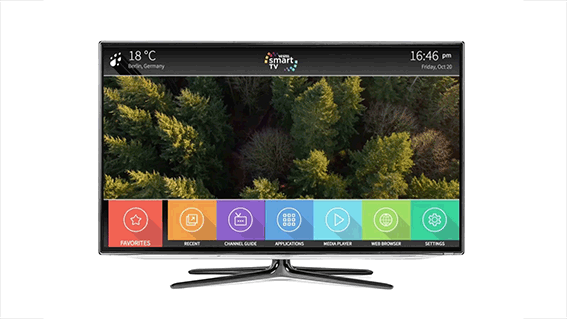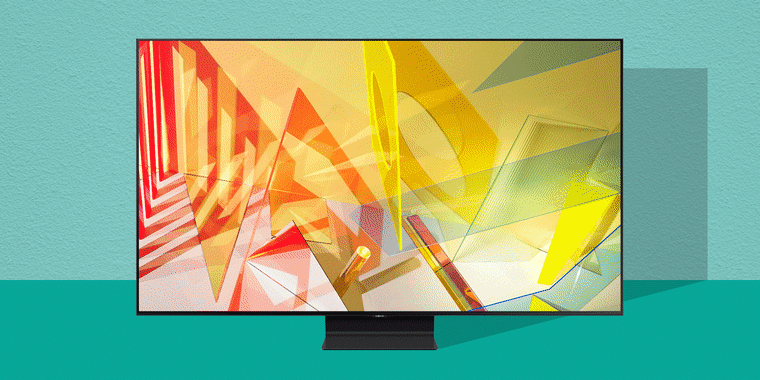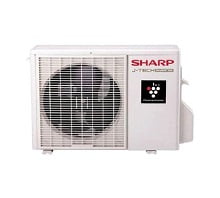LED, OLED & QLED Television — Which Is The Best TV According To Your Budget?
Did you think buying a TV is going to be super easy? That all you’ve to do is go to the electronics store, browse a couple of smart television models, and take your favorite pick?
Well, oh boy, you’re in for a surprise!
The minute you walk into the TV section, you’re going to be bombarded with a ton of terms that you’ve no idea what they mean! But three words that you really want to know about in advance are LED, OLED and QLED.
This is really going to help make your TV-shopping experience easier and you’ll be able to make a more informed decision too.
Needless to say, the first and most important feature you want on your television is kickass picture quality. Most manufacturers today have similar requirements. They all come in the same kinds of sizes and shapes, but what differs are the picture processors and panels—something that can make all the difference in your TV.
Let’s identify the similarities first. Be it LED, QLED or OLED, all three types of screen technologies support 4K resolution and accompany 4K color-boosting tech like HDR, HDR10+, and Dolby Vision.
Let’s look into the difference between the three types of TVs and see what’re the trade-offs between each of them

LED Televisions
These are your regular television sets – the ones you’ve probably seen the most.
Short for Light Emitting Diode, LED TVs are often considered as a competing concept with LCD Display. But in truth, LED TVs are actually an identical display technology to LCD.
Unlike LCDs that use a single backlight to illuminate the pixels, LED TVs have LED lights the make up the back-light which illuminates the pixels.
But, because the light comes from an external source, this increases the overall size of the TV. If you use an LED TV in pitch-black darkness, then you’ll notice uneven brightness and blotches on the screen, with a lack of shadow detail in the darker areas of the screen.
But other than that, the images on an LED TV are quite bright and clear, displaying pictures in excellent vivid colors!

What’s OLED TV Technology?
If you’ve never had the chance to experience an OLED TV, then it’s high time you do! We promise you that it’s going to be an absolutely ‘Woah’ moment for you!
We’re talking smooth, colorful, and contrasting picture display that you’re definitely going to fall in love with. So, the real question is, is this the flat TV technology we’ve been waiting for?
The term OLED stands for Organic Light Emitting Diode. This latest technology doesn’t use the back-light. It emits it’s own light and each pixel self-illuminates, giving you control of individual pixels of the images.
Organic films are placed between semiconductors in an OLED panel. Here, the films are supplied with electricity that allows them to function on an individual level. The processes use relatively less power to enhance the brightness, thus making total black possible.
This means that videos that feature both complete darkness and high brightness look realistic. Imagine watching a lifelike starry night on a TV – that’s what your OLED tech can do!
They’re, however, quite expensive and there isn’t enough information on how long will the OLED panels last. Not to mention, they’re only available in four sizes on the market – 55-, 65-, 77-, and 88- inch.
With OLED TVs, you can expect to see unparalleled picture quality, quick response time, and the cherry on top, their panel manufacturing is more environmentally friendly!
>> Best Microwave Ovens Buying Guide 2021 <<
What’s QLED TV Technology?
Short for Quantum-Dot Light Emitting Diode, QLED TVs are the new range of LED TVs introduced by Samsung. This QLED technology is nothing like OLED tech.
Unlike OLEDs, QLEDs don’t have self-emissive panels. Instead, they use LEDs along the edge to light up the pixels. These TVs use a quantum dot color filter which helps to create a much brighter image than that of OLED TVs. This means that you can enjoy a more lifelike color palette – especially for colors like greens, reds, and cyans.
However, the response time, the black-level quality, and infinite contrast ability aren’t as good as that of OLEDs. The organic nature of OLEDs means that they can turn off unused pixels completely. But, QLEDs and LEDs of even the best quality with effective local dimming let some light through.
Because QLED is an LCD-based technology, some areas of the screen may appear brighter than others. Even the best kinds of LCDs tend to fade and lose their colors unless viewing it from a sweet spot that’s directly in front of the TV. OLEDs, on the other hand, have uniform screens that maintain fidelity from most angles.

And if you’re someone who’s looking to enjoy a larger (or smaller) screen, then you’ll be happy to know that QLEDs come in all kinds of sizes. From as small as 43-inch to as big as 98-inch, you can find them in almost any size you want.
FINAL CALL: Which TV Should You Buy?
Other than Samsung Smart TV that sells both OLED and QLED tech, most manufacturers deal with one of the two technologies.
LG is the only company that’s making OLED panels, whereas Walton Smart TV is dealing with high-quality panels. All other brands use the technology on license and try to add their own genius o give their models an edge.
Your purchasing decision will largely depend on the price. If you’ve got money and really want to spend it on a magnificent TV experience, then you should consider OLEDs.
Besides the price, consider what features you want in your television set and make a choice accordingly. You’ve got all the information you need in this article. Just go through it and take a pick!
Head to Daraz’s LED television category to find yourself a reliable, durable, and affordable television set!
You may also like-
How to Pick Up A Complete TV for Home




